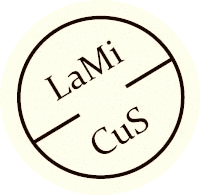Guidelines for Reviewers
Submitted manuscripts undergo double-blind peer review: the rewievers know neither the identity of the author nor that of the other reviewer. The author does not know the identity of either reviewer.
Each review has a clear conclusion placing the manuscript in one of the five categories below:
1. Very good, publish as is.
2. Good, minor editing issues.
3. Weak, requires major revisions.
4. Very weak, needs a complete overhaul.
5. Unsatisfactory, not suitable for publication.
A manuscript is accepted for publication if placed by the reviewers in categories 1-2. If the reviewers assign it to categories 3-4 or their opinions diverge, the editorial board may decide to request that the author revise the text substantially and resubmit it for review.
Apart from the review proper, the reviewer may submit a separate file with detailed comments, using the ‘track changes’ functionality. The reviewer should ensure that his or her identity is not revealed in the files or comments.
The reviewers are expected to provide a well-grounded justification for their conclusion, which will allow the authors to make the necessary revisions or understand why the manuscript has been rejected. Below you will find five categories of questions you may find helpful when drafting your review. They are intended as reference points. We do not expect you to answer all of them.
1. Methodology
Is the methodology suitable?
Is the selection and use of the literature correct and sufficient?
2. Originality
Is the work original?
Does the manuscript refer to the current state of research in the given subject area?
Is the work likely to be helpful for other scholars working in the field?
3. Clarity
Is the content clearly presented?
Are the aims of the paper clearly defined?
Is the argumentation sound?
Are the theoretical aspects explicated clearly?
4. Style
Is the manuscript written in correct English?
Are the data well presented?
Is the editing satisfactory?
5. Figures, tables, graphs
Are they appropriate in terms of form and content?
Are they indispensable to the argument?
Wskazówki dla recenzentów
Artykuły przechodzą proces podwójnej ślepej recenzji, czyli recenzenci nie wiedzą, ani kim jest autor tekstu, ani kim jest drugi recenzent, zaś autor nie wie, kim są recenzenci.
Każda recenzja zawiera jednoznaczną konkluzję przyznającą artykułowi jedną z pięciu ocen:
1. Bardzo dobrą, przyjąć w obecnej formie.
2. Dobrą, nieliczne uchybienia redakcyjne.
3. Słabą, wymagane poważne poprawki.
4. Bardzo słabą, artykuł wymaga ponownego opracowania.
5. Niewystarczającą, pracy nie można przyjąć do druku.
Artykuł jest przyjęty do druku, jeśli recenzenci wskazują oceny 1-2. Jeśli recenzenci zaliczają tekst do kategorii 3-4 lub ich zdania się różnią, redakcja podejmuje decyzję, czy poprosić autora o wprowadzenie gruntownych zmian, a następnie skierować tekst do powtórnej recenzji.
Oprócz zasadniczej recenzji recenzent może dołączyć osobny plik ze szczegółowymi uwagami, np. w trybie „śledź zmiany”, pamiętając, aby identyfikacja osoby recenzenta nie była dzięki tym plikom i komentarzom możliwa.
Od recenzentów oczekujemy pogłębionej argumentacji, która pozwoli autorom wprowadzić niezbędne poprawki albo zrozumieć, dlaczego tekst nie został przyjęty do druku. Poniżej proponujemy pytania w pięciu kategoriach, które mogą być pomocne przy sporządzeniu recenzji. Mają one jedynie stanowić punkt odniesienia i nie oczekujemy udzielenia odpowiedzi na wszystkie z nich.
1. Metodologia
Czy zastosowano odpowiednią metodologię badań?
Czy wybór i wykorzystanie literatury są poprawne i wystarczające?
2. Oryginalność
Czy jest to praca oryginalna?
Czy artykuł odnosi się do aktualnego stanu badań w danym zakresie?
Czy praca może być pomocna dla innych badaczy tej problematyki?
3. Jasność wypowiedzi
Czy treść jest jasno przedstawiona?
Czy jasno określono cele pracy?
Czy argumentacja jest logiczna?
Czy aspekty teoretyczne wyłożono w sposób klarowny?
4. Styl
Czy artykuł napisany jest dobrą polszczyzną?
Czy dane są dobrze przedstawione?
Czy redakcyjna strona artykułu jest poprawna?
5. Ryciny, tabele, wykresy
Czy ich treść i forma są właściwe?
Czy są niezbędne z punktu widzenia argumentacji?
